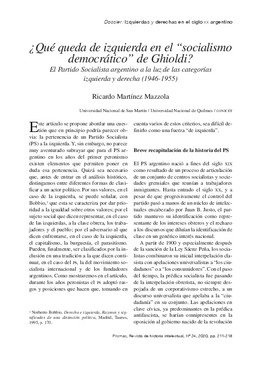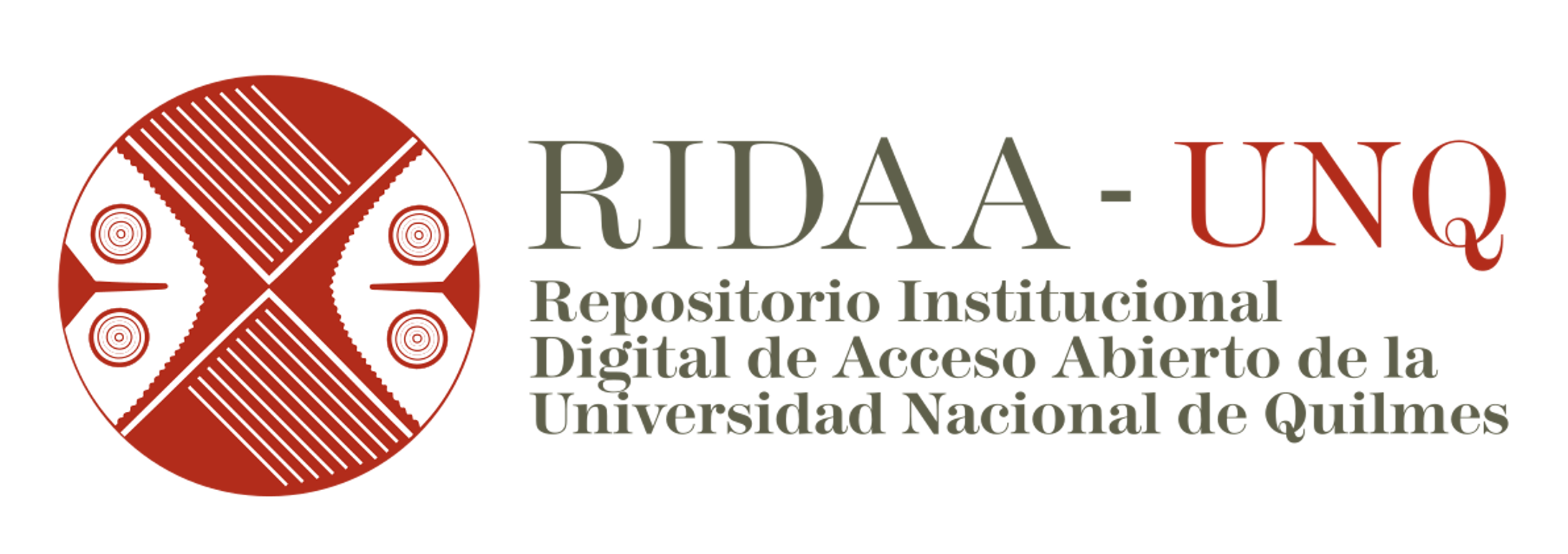¿Qué queda de izquierda en el “socialismo democrático” de Ghioldi? El Partido Socialista argentino a la luz de las categorías izquierda y derecha (1946-1955)
What remains of the left in Ghioldi’s “Democratic Socialism”? The Argentine Socialist Party in the light of the left and right - wing categories (1946-1955)

Ver/
Fecha
2020Autor
Martínez Mazzola, RicardoResumen
Este artículo pone en juego las categorías izquierda y derecha para interrogar la actuación del Partido Socialista (PS) argentino durante el primer peronismo. En la Introducción presentamos brevemente las líneas centrales de la historia del PS y subrayamos el gradual reemplazo del destinatario obrero por la apelación a la ciudadanía. A continuación, sostenemos que esa transformación se acentúa en los años peronistas, momento en que el combate antitotalitario, que enfrentaba al PS no solo con el peronismo sino también con el comunismo, concluyó en una dilución de la prédica propiamente socialista. Luego de señalar las funciones que el discurso antitotalitario cumplía para la dirección partidaria, explicamos el agotamiento de esta prédica después de 1955. En las reflexiones finales argumentamos acerca de las perplejidades que la prédica antitotalitaria suscita respecto de la ubicación política del socialismo, a la vez que abordamos las posibilidades y límites de una izquierda liberal. This article appeals to the left and right categories to question the performance of the Argentine Socialist Party (PS) during the first Peronism. In the Introduction, we briefly present the central lines of the PS history and underline the gradual replacement of the labor receiver by the appeal to citizenship. Next, we maintain that this transformation was accentuated in the Peronist years, at which time the anti-totalitarian combat, which confronted the PS not only with Peronism but also with communism, ended in a dilution of socialist preaching proper. After pointing out the functions that the antitotalitarian discourse fulfilled for the party leadership, we explained the exhaustion of this preaching after 1955. In the final reflections we argue about the perplexities that antitotalitarian preaching raises regarding the political location of socialism, to the once we address the possibilities and limits of a liberal left.
